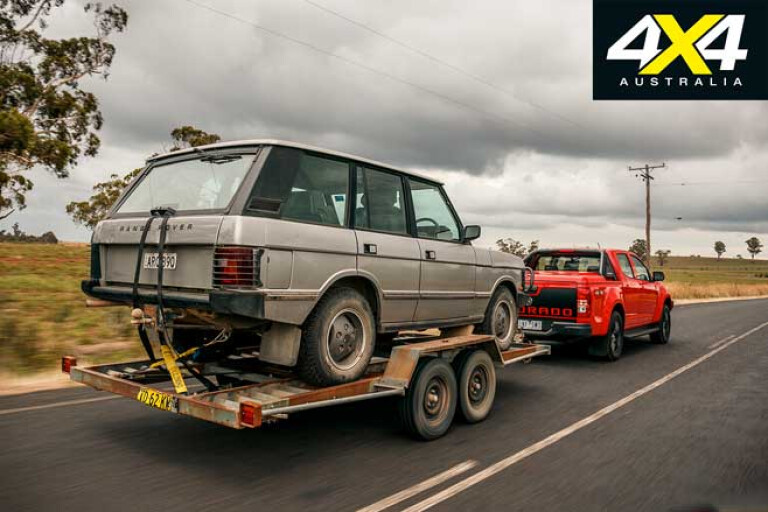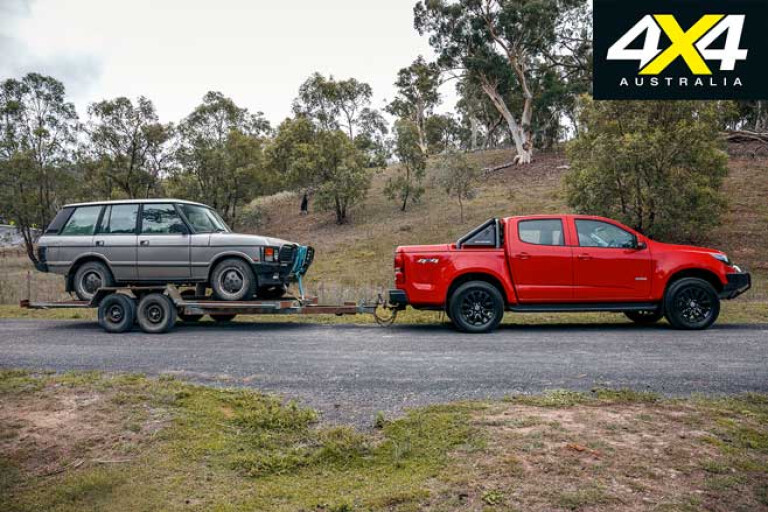
This gig is a giggle-a-minute with this new-fangled social media.
Back in the days when print media ruled the world, one’s work only came under scrutiny by those who paid money for the magazine. Now’s there’s neither much cost nor effort to have one’s say on a platform like Facebook.
Given my mouse-powered bush internet I normally don’t bother with FB, but colleagues suggested I should check the comments attached to the recent six-way dual-cab tow and load comparison test I conducted using my 1990 ‘Classic’ Range Rover as the primary load to be towed.

All the utes also carried 450kg in the tub as payload, plus the driver and observer; all up it totalled an additional 3144kg Gross Combined Mass, or roughly 10 per cent short of their respective maximum GCMs.
Not to let the utes off lightly – and among more general tow and load testing – we ran them each three times over up and down a long, steep incline with an average 15 per cent gradient that was steeper in parts and made more torturous with several near dead-stop hairpin bends on the way. This proved decisive in separating the good tow utes (Amarok V6 and Ranger 3.2) from the honest toilers (Colorado and D-Max) and the also-rans (X-Class V6 and Ranger 2.0).
Thank you very much for those who praised the Range Rover for its generally fine condition, and thank you even more for those asking if it’s for sale … possibly, at the right price. Special thanks also to those who suggested it would out-tow any of the six turbo-diesel dual-cabs we were testing; although, that confidence is unfortunately thoroughly misguided.

Despite having a 3.9-litre petrol V8 – a bigger engine with more cylinders than any of the utes – it only just betters (by 5kW) the least powerful of the utes in peak output and falls more than 100Nm short of the ute with the least torque. To achieve its best, the old petrol V8 also needs much higher engine speeds than these modern turbo-diesels need to do their best work. You’d expect no less from 30 years of progress in engine technology.
To the gent who suggested the RR looked to be off to the graveyard, you’ll be pleased to know, as I am, that Classic Range Rovers are quickly going up in value. To answer a couple of other questions: yes, the RR was tied down and yes, the trailer was rated to carry the load. By modern 4x4 standards the RR is actually quite light and doesn’t even top 1900kg when fuelled.

So why didn’t we tow a caravan, boat or horsefloat rather than the RR on the tandem axle trailer as some asked? Expediency for one, but more importantly we wanted a well-balanced tow load; something that’s easy to achieve by positioning the car in just the right place on the trailer to optimise the towball download, which is the secret to stable and safe towing.
Too much towball download will take weight off the front of the tow vehicle and affect its steering and stability, while too little towball download means too much weight at the rear of the towed element and an increased tendency for the ‘tail to wag the dog’.

COMMENTS